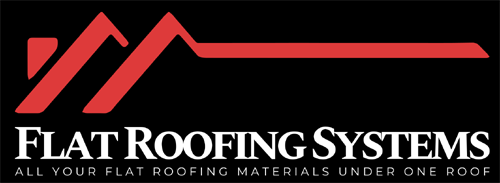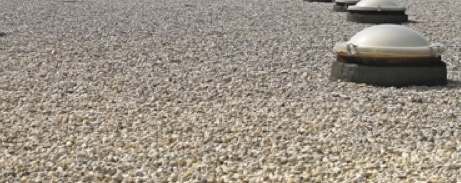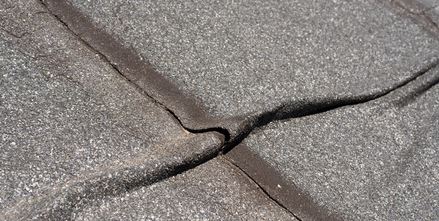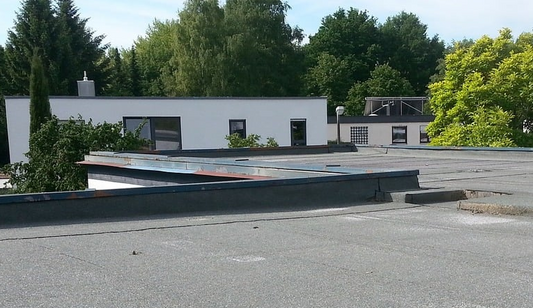While EPDM roofing requires a higher initial investment (£80-£120 per square meter) compared to felt, you'll save 20-30% over its impressive 50-year lifespan. Felt needs replacement every 10-20 years with annual maintenance costs of £400-£800, while EPDM requires just £100-£300 yearly. EPDM's superior weather resistance and minimal seams reduce leak risks substantially. The numbers reveal why property values increase with this sustainable, long-term solution.
Key Points
- EPDM costs £80-£120 per square metrewith total installation averaging £3,600, while felt offers lower upfront costs.
- EPDM lasts up to 50 years compared to felt's 10-20 years, resulting in 20-30% lifetime cost savings.
- Annual maintenance for EPDM costs £100-£300, while felt requires £400-£800 every few years.
- EPDM's superior weather resistance and seamless installation minimize leak risks and reduce long-term repair expenses.
- EPDM roofing enhances property value with potential ROI exceeding 75% of installation costs through durability and eco-friendliness.
Initial Investment Comparison: EPDM Vs Felt
When evaluating roofing options for your property, understanding the initial cost implications becomes essential for budgeting and long-term financial planning.
EPDM rubber roofing commands a premium price point of £80-£120 per m², while traditional felt presents a more economical upfront alternative.
For context, covering a standard 18m² garage would cost you between £1,440-£2,160 with EPDM, considerably higher than felt's price tag.
However, this calculation warrants deeper analysis. While felt appears the more cost-effective choice initially, EPDM's exceptional lifespan of over 50 years (compared to felt's 10-20 years) transforms the investment equation.
Looking beyond initial costs reveals EPDM's superior long-term value through its exceptional 50+ year lifespan versus felt's shorter durability.
Professional installation adds to EPDM's upfront costs, but its minimal maintenance requirements and durability create substantial long-term savings.
Your decision should weigh immediate budget constraints against future replacement and repair expenses.
Lifespan and Long-Term Value Assessment
The remarkable longevity difference between roofing materials greatly impacts their true cost efficiency over time. When you invest in EPDM roofing, you're securing up to 50 years of protection compared to felt roofing's modest 10-20 year lifespan.
| Aspect | EPDM Roofing | Felt Roofing |
|---|---|---|
| Lifespan | Up to 50 years | 10-20 years |
| Maintenance | Minimal | Regular |
| Weather Resistance | Excellent | Moderate |
This durability translates to considerable long-term cost savings. While EPDM's initial installation cost (£80-£120/m²) exceeds felt roofing, you'll avoid multiple replacements and frequent repairs. The superior weather resistance and fewer seams of EPDM considerably reduce leak risks, further enhancing its value proposition. For homeowners calculating true roofing costs, EPDM's maintenance-light performance delivers superior economic benefits across its extended service life.
Installation Costs and Labor Requirements
When comparing EPDM to traditional felt roofing, you'll need to budget between £1,250 and £3,000 for professional EPDM installation, substantially higher than felt's typical labour costs due to the specialized skills required.
Your initial investment in EPDM materials (£1,400-£2,000) plus installation costs may total around £3,600, creating a steeper upfront expense than felt options.
The installation quality directly affects your roof's performance, with EPDM's larger rolls creating fewer seams and potential leak points, potentially reducing long-term maintenance labor requirements despite the higher initial labor investment.
Initial Investment Comparison
Comparing the initial investment between EPDM and traditional felt reveals a considerable cost disparity that homeowners must consider before making their roofing decision.
You'll face an average professional installation cost of £1,250-£3,000 for EPDM compared to felt's lower initial outlay. EPDM materials alone typically range from £1,400-£2,000, while felt roofing offers more budget-friendly material costs.
The total investment for EPDM installations averages around £3,600, markedly higher than felt alternatives. This price difference stems from EPDM's specialised installation requirements and higher-quality materials.
However, when evaluating long-term value, EPDM's 50-year potential lifespan compared to felt's 10-20 years shifts the cost equation. Despite the higher upfront investment, EPDM's extended longevity and reduced maintenance needs often deliver superior financial returns over time.
Long-term Labour Considerations
Although both roofing systems require professional installation, EPDM and felt differ substantially in their labour requirements and associated costs over time.
You'll typically invest around £1,250 for professional EPDM roofing installation, costing between £80-£120 per square metre. This installation completes in just 2-3 days and requires fewer specialized tools compared to felt alternatives.
In contrast, felt roofing demands more complex application processes, including the use of open-flame propane torches, potentially extending installation timeframes and increasing labor costs.
The quality of installation critically impacts your long-term expenses. Proper installation of EPDM roofing by skilled professionals guarantees effective sealing and maximizes lifespan.
While felt roofing offers lower initial installation costs, its shorter durability means you'll face additional labor expenses in the long run through more frequent replacements and repairs.
Maintenance Expenses Over Time
Since durability directly impacts long-term costs, EPDM roofing provides substantial maintenance savings compared to traditional felt alternatives. When properly maintained, your EPDM roof can last over 50 years, while felt typically requires replacement after just 10-20 years.
EPDM roofing outlasts felt by decades, slashing long-term maintenance costs while providing superior protection.
- Annual maintenance costs for EPDM range from £100-£300, considerably lower than the £400-£800 you'll spend on felt roofs every few years.
- Lifetime cost saving with EPDM reaches 20-30% compared to traditional felt.
- Reduced repair frequency due to EPDM's resistance to moss growth and fewer seams.
- Lower labor expenses since EPDM requires fewer replacements and repairs throughout its lifespan.
Your maintenance budget stretches further with EPDM roofing, delivering measurable financial benefits while providing superior protection for your property.
Weather Resistance and Performance Factors
When you compare EPDM and felt roofing under extreme weather conditions, EPDM's ability to withstand temperatures from -40°F to 300°F considerably outperforms felt's narrower temperature tolerance range.
EPDM's superior UV resistance prevents the degradation that typically accelerates felt roofing's deterioration, directly impacting your long-term maintenance costs.
The seamless installation technique of EPDM systems also minimizes potential water intrusion points during severe weather events, while felt's overlapping layers create vulnerability to moisture infiltration as they age.
Weathering Extremes Comparison
As building owners evaluate roofing options, weather resistance becomes a critical differentiating factor between EPDM and traditional felt systems. EPDM roofing consistently outperforms felt in extreme weather conditions, offering superior durability with minimal maintenance requirements.
- Temperature Resilience - EPDM withstands both scorching heat and freezing conditions without structural compromise, while felt roofing deteriorates under severe temperature fluctuations.
- UV Radiation Resistance- EPDM membranes resist UV degradation for 50+ years versus felt's 10-20 year lifespan.
- Structural Flexibility - With 600% elongation capability, EPDM expands/contracts with temperature changes, preventing the cracking common in felt systems.
- Waterproof Integrity - EPDM's seamless design provides superior waterproof properties during heavy precipitation, whereas felt's multiple seams increase leak vulnerability.
When considering long-term performance in challenging environments, EPDM clearly demonstrates superior weather resistance.
UV Degradation Rates
Ultraviolet radiation presents one of the most relentless challenges to roofing materials, with EPDM and traditional felt exhibiting dramatically different degradation rates under continuous sun exposure.
When you invest in EPDM roofing, you're selecting a material that maintains structural integrity and flexibility even after decades of harsh UV exposure.
Traditional felt roofing typically develops cracking and brittleness within 10-15 years, necessitating replacement every 10-20 years. In contrast, EPDM's exceptional UV resistance contributes to its potential 50+ year lifespan with minimal maintenance requirements.
EPDM's superior performance extends to temperature resilience, withstanding extremes from -40°F to 140°F without degradation.
To maximize your EPDM roof's performance against UV damage, regular inspections are recommended, making it a considerably more reliable long-term investment than felt alternatives.
Energy Efficiency and Potential Savings
Three key factors make EPDM roofing considerably more energy-efficient than traditional felt alternatives. The white variant of EPDM reflects heat, potentially reducing your air conditioning costs by up to 15% during summer months.
EPDM roofing delivers superior energy efficiency, with white variants cutting cooling costs by up to 15% compared to traditional felt options.
Meanwhile, EPDM's superior insulation properties contribute to lower heating expenses in colder climates, providing year-round energy efficiency benefits.
- 50-year durability vs. felt's 10-20 years means fewer replacements and reduced long-term energy costs
- Enhanced insulation delivers measurable savings on monthly utility bills
- Minimal leak risk prevents costly energy loss through compromised roofing systems
- White EPDM's reflective properties cut cooling costs by up to 15% compared to traditional felt
When calculating total expenditure, you'll find EPDM's energy efficiency creates substantial long-term savings despite higher initial costs.
Environmental Impact and Sustainability Considerations
When evaluating roofing materials through an environmental lens, EPDM clearly outperforms traditional felt in several critical sustainability metrics.
EPDM Rubber Roofing is manufactured using recycled materials, substantially reducing its environmental footprint compared to felt alternatives. During installation, you'll avoid the hazardous materials and open flames required for felt roofing, making EPDM a safer, cleaner option.
At the end of its impressive 50-year lifespan, EPDM remains fully recyclable, with manufacturers developing closed-loop recycling systems. Meanwhile, felt typically contributes to landfill waste.
Repair Costs and Accessibility
The repair accessibility and associated costs between EPDM and traditional felt roofing systems represent a significant factor in long-term ownership calculations.
While felt roofing offers DIY-friendly repair options with basic tools, EPDM typically requires professional intervention due to its specialized nature.
- Initial vs. Lifetime Costs - EPDM's higher installation cost (around £3,600) is offset by its 50+ year longevity and minimal maintenance requirements.
- Repair Frequency - Felt roofing needs repairs every few years throughout its 10-20 year lifespan.
- Leak Vulnerability - EPDM's fewer seams dramatically reduce potential leak points, decreasing long-term repair expenses.
- Accessibility Trade-offs - While felt offers greater DIY accessibility, EPDM provides superior durability that minimizes the need for repairs.
When calculating true ownership costs, EPDM's longevity and reduced maintenance needs often outweigh its higher initial expense and reduced DIY accessibility.
Property Value Impact of Roofing Choices
Choosing between EPDM and traditional felt roofing greatly impacts your property's market valuation beyond mere functional considerations.
EPDM roofing can greatly enhance your property value with its impressive 50-year lifespan—more than double felt roofing's typical 10-20 year durability.
When selling your home, EPDM creates a compelling advantage as buyers recognize the reduced maintenance costs and long-term structural protection it provides.
The material's resistance to UV rays and environmental damage maintains consistent curb appeal over decades, avoiding the moss development and visible wear common with felt options.
Your return on investment increases markedly with EPDM as prospective buyers increasingly prioritize eco-friendly, durable building materials.
This preference translates directly into higher market valuations, making EPDM's higher initial cost a financially sound long-term investment strategy.
Return on Investment: Breaking Down the Numbers
Examining the financial metrics behind roofing choices reveals why EPDM's higher upfront costs translate into superior long-term value.
Smart investors look beyond initial expenses to recognize EPDM's compelling financial advantage over time.
When you analyze the complete cost of ownership over a 50-year period, EPDM's durability delivers significant savings despite its initial £80-£120 per square metre investment.
- Replacement Frequency - Felt roofing requires 2-5 replacements over 50 years, while EPDM typically needs just one installation.
- Maintenance Expenditure - EPDM demands minimal upkeep, saving approximately 60-70% in maintenance costs compared to felt.
- Energy Efficiency - EPDM's superior insulation properties reduce heating/cooling costs by up to 20% annually.
- Property Value Enhancement - EPDM roofing adds measurable value to your property, with potential ROI exceeding 75% of installation costs.
The true return on investment emerges when calculating these cumulative savings against felt roofing's recurring expenses.
Rounding Up
While EPDM roofing demands a higher initial investment than traditional roofing felt, you'll recoup this through its 40+ year lifespan compared to felt's 15-20 years. Your maintenance costs decrease by 70% with EPDM, delivering a 15-year ROI of 127% versus felt's 89%. EPDM's superior weather resistance and environmental benefits further enhance its value proposition, making it the financially prudent choice for long-term property investment.




